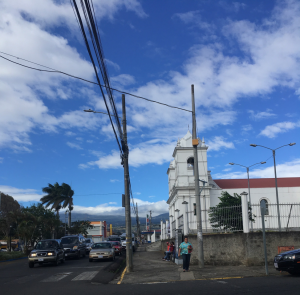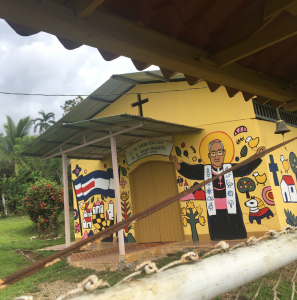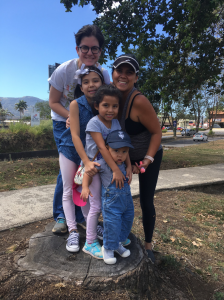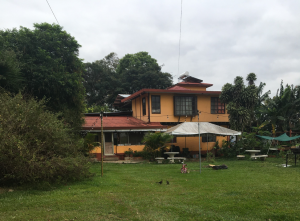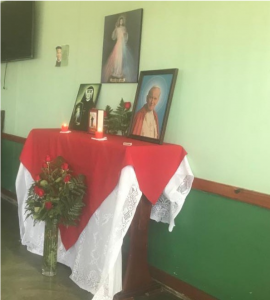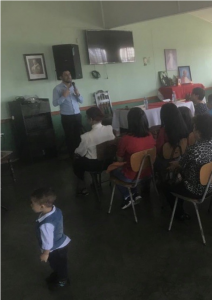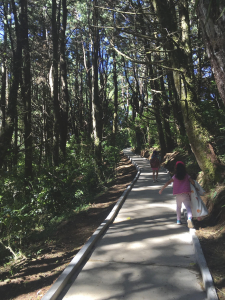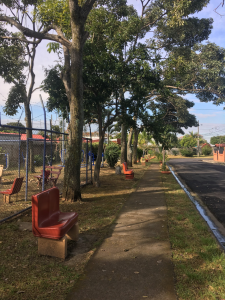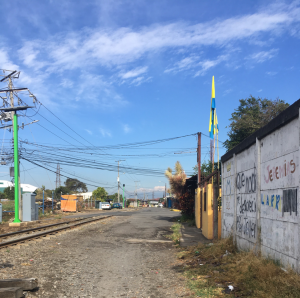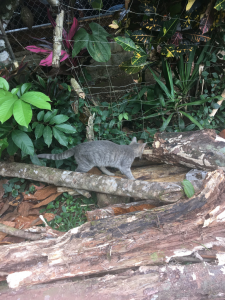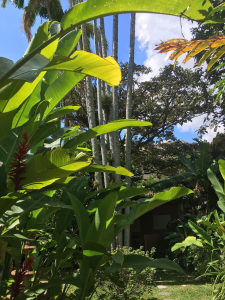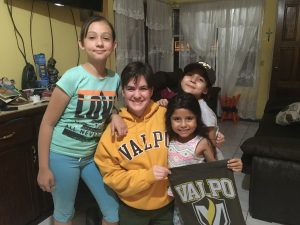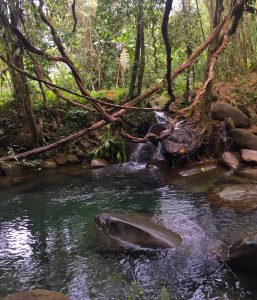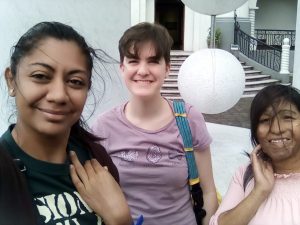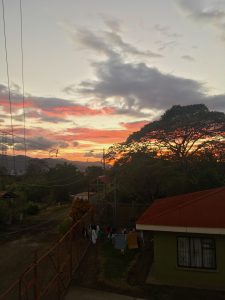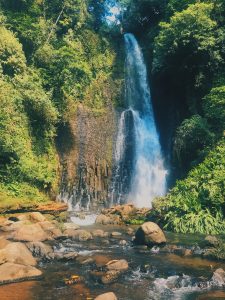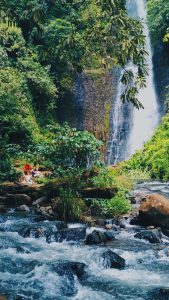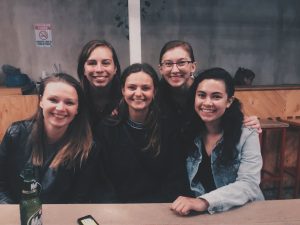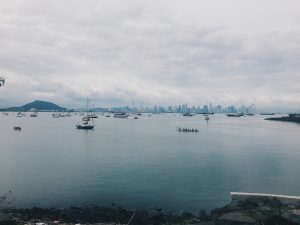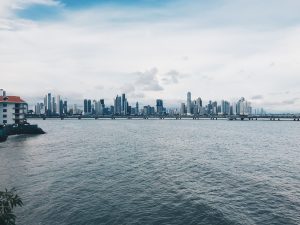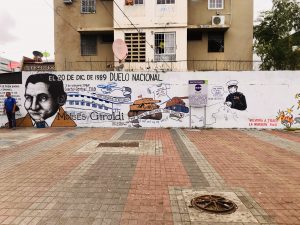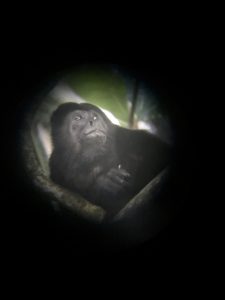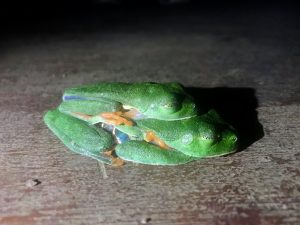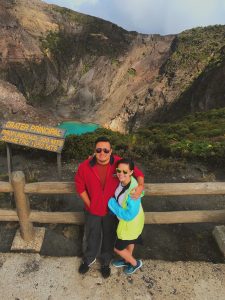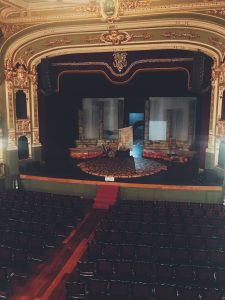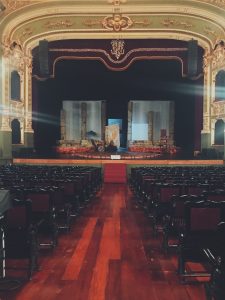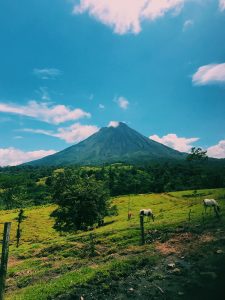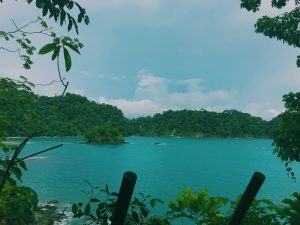Name: Jenna Johnston
Location: San José, Costa Rica
Since my time in Costa Rica was cut short, for 3 of my 5 remaining blogs, I’m publishing stories based around the academic research and personal interviews I conducted for my Central American history class.
On the surface, Costa Rica is doing well when it comes to the rights of LGBTQ+ people. There are some non-discrimination protections for LGBTQ+ people in areas like work and commerce, and marriage equality will be legalized in May. At the same time as these political advances, Costa Rica remains a Catholic country: legally as the state religion, and popularly as the religious identity of three-fourths of the population. These seemingly contradictory realities have complex roots and results in the fields of politics, Christianity, and history, as well as implications for the lives of individuals.
To gain a more personal perspective on the interrelatedness of LGBTQ+ rights, identity, and Christianity in Latin America, I conducted an interview with Alex*, an ordained Lutheran pastor who has lived in Costa Rica for twelve years. Alex is also gay and was born and raised in Cuba. As such, he has unique insight into the connections between LGBTQ+ rights, Christianity, and politics in Latin America. I interviewed Alex and researched to learn about the history of LGBTQ+ rights and marriage equality in Costa Rica and Cuba. I spoke with Alex about his experience growing up and working in the church throughout his life, and his personal experience with the interactions between Christianity and LGBTQ+ identity in both countries.
According to recent studies, 92% of Costa Ricans identify as Christian, including 76% Catholic (Velzer 2015). There is no available data about the percentage of the population who identifies as LGBTQ+. The first Roman Catholic missionary came to present-day Costa Rica in 1522, and shortly after, the Spanish colony was officially established in 1524 (Holland 2002). After colonization, Roman Catholic ideology was pushed onto indigenous peoples in Central America. It is difficult to know much about how Indigenous cultures in Costa Rica historically treated LGBTQ+ people, because the surviving narratives are almost entirely from the perspectives of colonizers, but there is some evidence of wider acceptance and normalization of diverse sexualities and gender identities in indigenous Latin America (Fernandez 2004b). Same-sex sexual activity was punishable by death until 1575, when the Spanish crown decided that indigenous people should not be judged by the Inquisition in the same way as Spaniards “because they were new to the Faith and, thus, they were not gente de razón [people capable of reasoning]” (Fernandez 2004b). Homosexuality was viewed as a “nefarious sin”, and after independence in 1821, it remained politically punishable until its decriminalization in the 1870s under the liberal president Tomás Guardia (Fernandez 2004a).
Wider social acceptance in Costa Rica followed trends in Western societies that began in the 1960s and 70s (Fernandez 2004a), and remaining laws that criminalized “scandalous sodomy”, which was not well defined and was rarely used as a charge in court, were repealed in 2002 (ILGA 2009). Since the election of President Carlos Alvarado Quesada in 2018, LGBTQ rights in Costa Rica have continued to improve. The issue of same-sex marriage was a major issue in the 2018 election, and after winning by a landslide, Alvarado has led Costa Rica to give people the right to change their legal gender, and has promoted the acceptance of the ruling by the Inter-American Court of Human Rights to legalize same-sex marriage and adoption by June 2020 (Henley 2018).
From a legal perspective, the rights of LGBTQ people today look similar in Costa Rica and Cuba — both are pending or awaiting legalization of same-sex marriage (Paz Martín 2018), and both recently legalized official gender changes (Kirk and Huish 2018). However, Costa Rica and Cuba have vastly different histories around LGBTQ issues. The Cuban government blatantly persecuted LGBTQ+ people as recently as the 1960s, when men who were suspected to be homosexual were incarcerated in labor camps (Arguelles and Rich 1984). Yet today, Cuba is considered one of the most socially accepting countries of LGBTQ+ people in Latin America and the Caribbean (Smith 2018). This is likely related to the fact that Cuba’s Communist government is not associated with Catholicism, and Cuba’s population is much less Christian than Costa Rica’s: one-fourth of the population identifies as non-religious, and while 60% of the population identifies as Catholic, less than 5% of that group attend mass regularly (WOLA 2012). Cuba’s complex sociopolitical and religious history cannot be explored within the context of this story, so the focus will remain on Cuba’s recent history, which relates most closely with Alex’s life experiences.
Alex said his childhood in Cuba was different from most Latin Americans’ childhoods because Cuba is a communist country: education and healthcare are relatively good, but freedom and human rights are more complicated. Alex grew up in and was always connected to the church, which was unusual for Cubans. He wasn’t open about his sexuality while living in Cuba, because of general sentiments about LGBTQ+ people, and especially after he was ordained as a pastor in the Presbyterian church. He knew some LGBTQ+ people who were out in their lives and to their church communities. However, these people did not typically feel comfortable enough to display public affection with their partners, to talk about their identities openly, or to seek church leadership or ordination. In general, according to Alex, LGBTQ+ people in the Presbyterian church in Cuba lived a life of “toleration in silence.”
Alex drew comparisons between the culture of his Presbyterian church in Cuba and mainstream Costa Rican Catholic culture when he moved there. Most Costa Ricans knew that LGBTQ+ people existed, but they misunderstood the topic and didn’t want to talk or think about it. People would quietly disagree, but avoid direct confrontation. Alex became a Lutheran pastor in Costa Rica, and found an accepting, open community that contrasted his experience in the Presbyterian church in Cuba. In the Lutheran church, Alex could be out as gay and work as a pastor, which he had never thought would be possible. He was welcomed in a community based on inclusion and social change and was able to have a “reencounter” with theology and sexuality. Many people with different histories of being excluded from the church came to his church, which helped Alex realize how important acceptance and inclusion are. Compared to the millions of Costa Rican Catholics, only a few thousand Costa Ricans identify as Lutheran (Bartlett 2008). Alex believes that now is the time for a “moment of integration and acceptance” in wider Costa Rican Christianity and culture.
The recent marriage equality debate in Costa Rica has been complex and polarizing in Costa Rica, which is frustrating for Alex, but will hopefully be resolved when marriage equality is legalized in late -May. The issue arose most recently in 2015, when due to an error with government identification paperwork, two women, Laura Flórez-Estrada and Jazmín Elizondo, got legally married. The couple, as well as those who participated in the official ceremony, were accused by the state of “ideological falsehood to the detriment of the family” (Madrigal 2019). This lawsuit led to the 2018 decisions by the Inter-American Court of Human Rights and Costa Rica’s Sala Constitucional, which stated that prohibiting same-sex marriage was unconstitutional and should be legalized in the next 18 months (Rico 2019). Alex described being frustrated with the public discourse around these issues. He said that it led to radicalization: moderate Christians who previously had no opinion on marriage equality were led by politicians and media to adopt increasingly hateful positions. However, he was grateful that Alvarado Quesada, the pro-marriage equality candidate, won the presidential election in 2018, and hoped that after legalization in May, the issue will turn back into something that can be discussed on the individual human level, instead of on overwhelming political scales.
In Cuba, Alex is less personally impacted by debates about marriage equality, but still is invested in how the issue is changing and progressing. Political forces in Cuba work differently because of the one-party system: Alex was very clear to express that no one in Cuba has political power outside of the government party. However, he said the Church still has influence over political decisions, as evidenced by the changing discussion around marriage equality about a year ago. While drafting a new Constitution in 2018, the Party decided to legalize marriage equality. Alex thinks this was because the Party wanted to placate and stay on the side of Western foreigners, presenting an image of Cuba as a place with democracy and progressivism. However, due to fear of the church’s response, they changed their minds and removed the accepting language from the draft of the Constitution, saying they may put it into the draft of the new Family Code instead (Paz Martín 2018). Alex was hopeful that the rights of LGBTQ+ people will continue to improve in Cuba but recognizes that the complex interactions between the Party and the Church make predicting or influencing change difficult.
The relationship between history, Christianity, LGBTQ+ identity, and politics has its own manifestations and complexities in every country. There is a tendency in some areas of the “developed” world to either wholeheartedly celebrate or completely dismiss countries in Latin America as progressive or not, accepting or not. However, the truth in many Latin American countries, such as Cuba and Costa Rica, is much more complicated. Histories of colonialism, Catholic influence, polarization, and reform have led to confusing realities and seeming contradictions between law, public opinion, and everyday life. Adding a personal perspective to historical context facilitates a more complex, complete understanding of LGBTQ+ and Christian issues.
*Name changed to protect privacy.
References cited in this story can be viewed here: https://bit.ly/2y32okB

